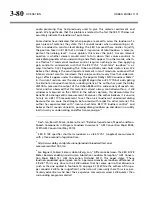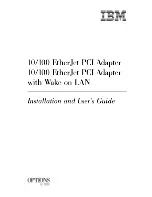
OPTIMOD-PC
OPERATION
3-81
Studies indicating that BS.1770 is inaccurate at very low frequencies
Another weakness of BS.1770 is that, unlike the CBS loudness controller and meter
as implemented in Orban products, the BS.1770 algorithm does not take into ac-
count the loudness contributed by the LFE channel, for good reason. Nacross and
Lavoie
tried to extend the BS.1770 algorithm to include the LFE channel by sum-
ming the K-weighted LFE channel’s power into the current BS.1770 algorithm,
where the gain is weighted for the fact that LFE channel receives a 10 dB gain boost
on playback, per Dolby’s standards. This modified BS.1770 algorithm failed to agree
with the judgments of a subjective listening panel unless a 10 dB attenuation
“fudge factor” was applied to the LFE channel prior to its power summation with
the other channels. Nacross and Lavoie concluded:
A problem exists however, should ITU-R BS.1770 be modified to simply
include an attenuated version of the LFE channel. Because the LFE chan-
nel receives a 10 dB boost on playback, the low-frequencies on this chan-
nel would contribute differently to a loudness measure if they were
moved to one of the other main channels, even though the perceived
loudness would not appreciably change. This suggests that while LFE con-
tent does contribute to the perceived loudness, Equation (2)
does not
sufficiently predict how that content should be included.
An Australian study may shed light on the failure of BS.1770 when program material
contains considerable energy at very low frequencies.
The authors used octave-
band noise in subjective listening tests with the goal of verifying the K-weighting
curve used in BS.1770. The authors state:
Comparison of the test results with an image of the filter curve currently
specified in ITU-R Recommendation BS.1770 (Figure 13) shows good
agreement at 250 Hz and above 500 Hz, reasonable agreement at 500
Hz, but marked difference in the bottom two octaves.
The relatively good performance of the BS.1770 algorithm in ITU trials
suggests that, in partial loudness terms, there was probably not much
test content in the 125 Hz band or below. While the existing BS.1770 fil-
ter curve is probably a good choice in applications where the program is
dominated by speech, and it is certainly an improvement on the A and B
curves in that application, it is likely to give significant errors in measur-
ing the loudness of other programs with more partial loudness in the
15
Norcross, Scott G; Lavoie, Michel C., ”Investigations on the Inclusion of the LFE
Channel in the ITU-R BS.1770-1 Loudness Algorithm,” AES Convention Paper 7829,
127
th
AES Convention (October 2009)
16
s
s
T
i
T
x
x
T
x
x
LFE
T
R
L
C
R
L
i
dB
dt
dt
G
w
Leq
ref
i
w
ref
w
,
,
,
,
,
)
(
0
0
1
1
2
2
,
2
2
=
⎥
⎦
⎤
⎢
⎣
⎡
+
=
∫
∑ ∫
17
Cabrera, Densil; Dash, Ian; Miranda, Luis, “Multichannel Loudness Listening Test,”
AES Convention Paper 7451, 124
th
AES Convention (May 2008)
Summary of Contents for Optimod-PC 1101
Page 4: ......
Page 14: ......
Page 121: ...OPTIMOD PC OPERATION 3 1 Section 3 Operation Figure 3 1 The OPTIMOD PC Control Application...
Page 192: ...3 72 OPERATION ORBAN MODEL 1101...
Page 204: ......
Page 210: ......
Page 212: ...5 2 UNINSTALLATION ORBAN MODEL 1101...
Page 236: ......
















































